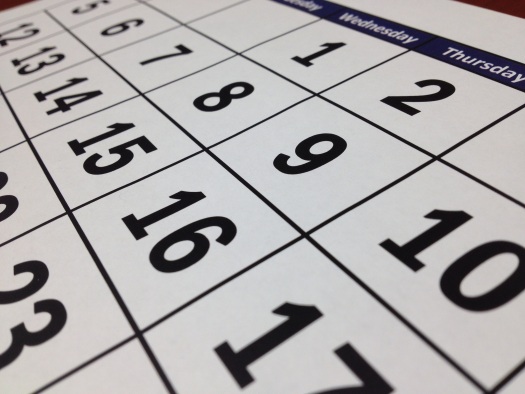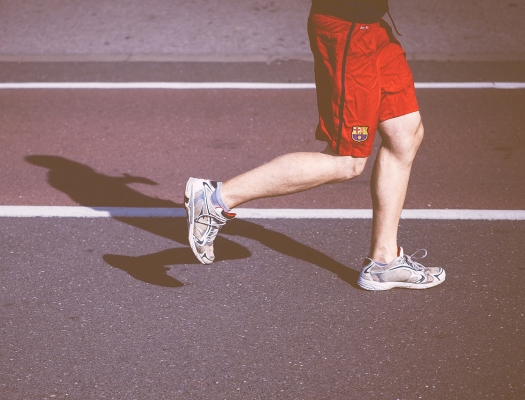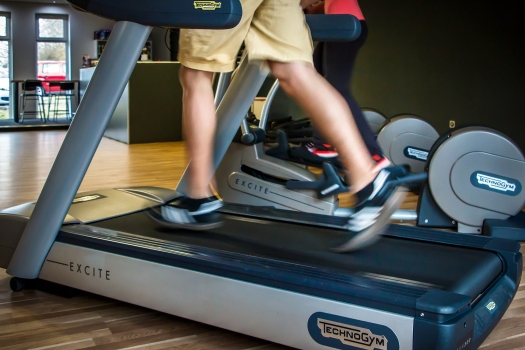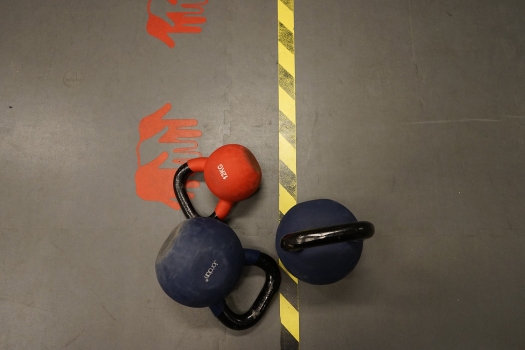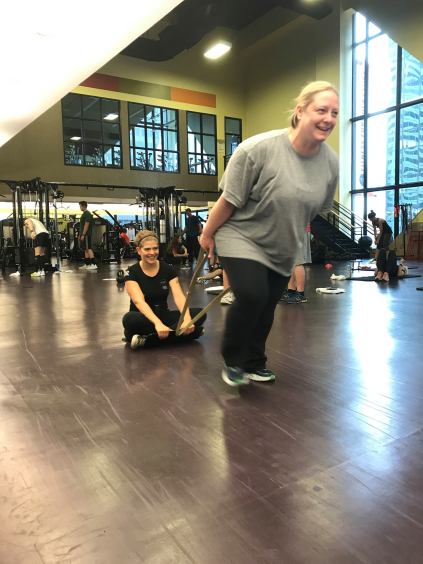I work with many clients who train exclusively at home. One of these clients – who hadn’t exercised regularly in years – made fairly steady initial progress using only his bodyweight.
Eventually, however, he hit a plateau and became frustrated. His progress slowed and he was getting bored with the limited exercises he could do.
Since joining a gym wasn’t an option for this client, I suggested he upgrade his home workout set-up with a set of bands and PowerBlocks.
Within a few weeks, he felt stronger and was noticing renewed changes in his body. He loved being able to push himself more and enjoyed the new exercises he could now perform.
Making a small investment in home exercise equipment put the spark back in my client’s training and helped him get out of a rut.
For most people who train at home, there comes a time when bodyweight exercises are no longer challenging and/or interesting. If you find yourself getting bored with your at-home workouts or dissatisfied with your progress, it may be time to upgrade your home gym.
The good news is you can do this at fairly low cost with minimal equipment. Continue reading to learn my top 6 equipment recommendations for at-home trainees.
Bands
Bands are the first piece of equipment I recommend for all my at-home clients. They’re cheap, lightweight, and easy to store and transport. With a bit of creativity, you can train every muscle in your body using bands.
You can purchase different types of bands including small and large circular bands as well as longer straight bands with handles. Some band sets come with a door mount mount and a strap to attach the band to your ankle so you can target your hips and glutes.
I recommend purchasing a set of bands of varying resistance levels. You will need different thicknesses to effectively train different muscles and movements, especially if bands are the only piece of equipment you have.
The one downside to bands is that by themselves, they may not be sufficiently challenging for stronger trainees. Some movements are also more awkward to load with bands than other types of resistance.
Sliders
Sliders are placed beneath your hands or feet to add resistance to lunges, pushups, leg curls, and core exercises. Although you can order sliders designed for fitness, cheap furniture sliders purchased from a hardware store are just as effective. You may need to buy different kinds of sliders depending on the flooring in your home.
Ross Enamait introduced me to the incredible possibilities of slider training. Watch these videos for ideas on what you can do with sliders. (Note – Ross is also a great guy to check out if you’re interested in building more DIY home gym equipment.)

Door chin-up rig
If you want to get better at chin ups, you have to spend lots of time practicing. Purchasing a door chin-up rig helps you bump up your chin-up volume.
Door rigs can be a single bar or have multiple grip options. Most can be easily removed and stored when not in use. Some rigs can also be used for pushups, modified dips, and other exercises when placed on the floor.
A word of caution – before you buy a door rig, make sure your door frames can support it. Some doorways are too wide or don’t have stable frames. I learned this the hard way when I came crashing down out of an old door frame that couldn’t handle the strain of a chin-up rig. Learn from my mistake and always be careful when hanging or mounting equipment in your apartment or house.
Suspension trainer
A suspension trainer is another effective, minimalist option to train your entire body. TRX is the most well known brand, but there are other, cheaper options which work just as well.
To use a suspension trainer at home, you need a way to mount it on a door, wall, or ceiling. Again, be careful and make sure you can do this safely before investing in the equipment.

Powerblocks
If you really want to level up your home gym setup, you need to invest in weights. Powerblocks are a great option for people used to training with dumbbells or barbells. These adjustable dumbbells allow you to change the weight by adding or removing small plates. You can purchase weights with the potential to be as heavy as 125lbs. Powerblocks take up very little space and essentially replace an entire rack of dumbbells with only two weights.
Powerblocks are the most expensive recommendation on my list, and I wouldn’t recommend purchasing them unless you’re serious about training at home. However, you do get a great value with this purchase. Powerblocks are made well and will certainly last a long time.
Kettlebells
My final recommendation for your minimal at-home gym is kettlebells. Kettlebells are weights with the load placed beneath the grip, as opposed to on the side like with dumbbells. Kettlebell training has become popular in the last few years thanks to the rise of crossfit and “functional” fitness. You can train every muscle in your body weight a kettlebell and perform certain ballistic and power movements with you can’t do with other types of weights.
The biggest advantage to kettlebells is that you can get away with purchasing just one. This makes kettlebells more cost-effective than other times of weights. I have one 16kg kettlebell at my apartment and I can use it to train every muscle in my body.
However, some people may find your one kettlebell is too heavy for certain movements and too light for others. In that case, I do recommend grabbing a few kettlebells in different sizes so you can have more effective and appropriate training.
Kettlebell training can be more complex than other styles of lifting. You should seek out a qualified coach or take a class to learn the basics. If this is impossible, StrongFirst and Dragon Door are two great places to do some research or seek out instructional materials.

If you’re looking to improve your at-home workouts, purchasing a few small pieces of equipment can be a game changer.
Start with small equipment like bands and sliders.
If you can, hook up a TRX or door chin-up rig.
Finally, if you’re serious about getting stronger or building muscle, invest in some weights that make sense for your setup such as Powerblocks or kettlebells.
Like my client found, this may be exactly the change you need to see renewed progress and start loving your workouts again.
If you’re interested in putting together a fun and effective at-home training program, please apply for my online training program here.









